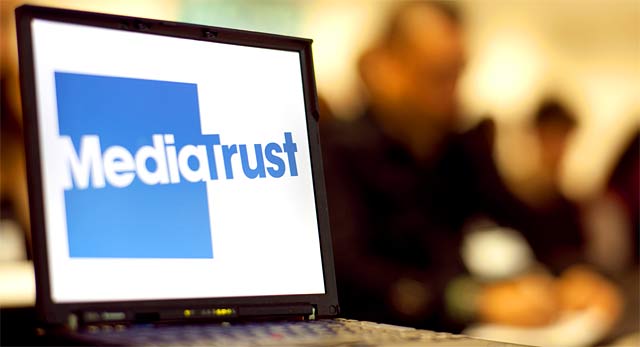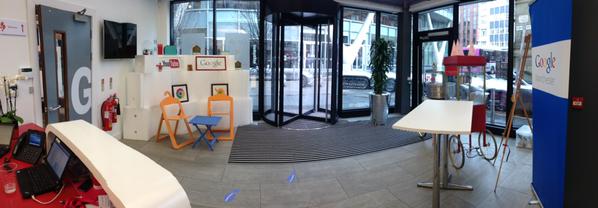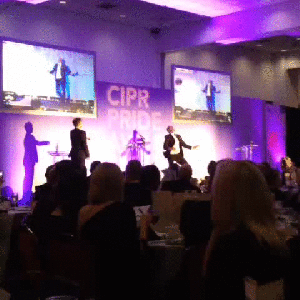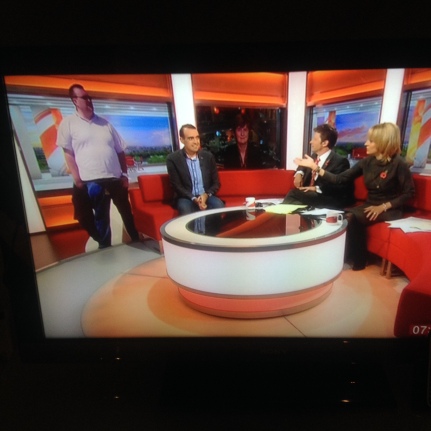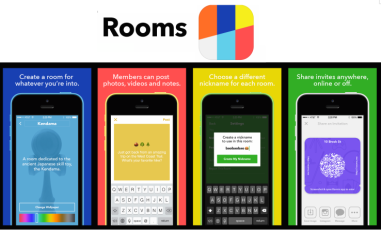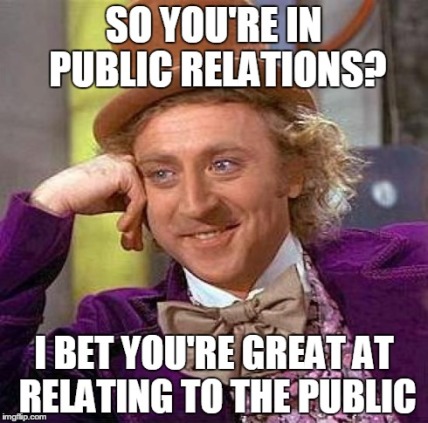Late last month, Facebook’s ‘algorithm’ changed again. Brands the world over let out a collective groan.
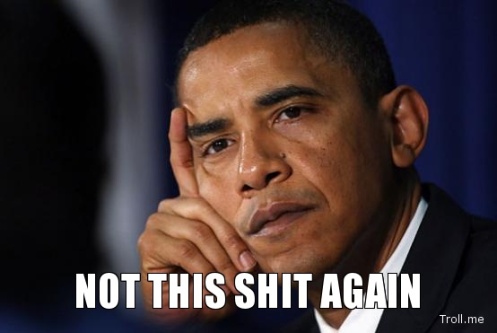
However, while Facebook’s newsfeed changes might be a mild irritation for those in-the-know, those who aren’t aware of the changes risk tumbling engagement levels by failing to adapt to the ever-changing environment of the world’s largest social network.
Research published by Social@Oglivy suggests that brands are having to work harder than ever to reach fans without paying for adverts. In 2012 Facebook stated that brands could expect to reach 16% of their audience with an average post. A year later and digital consultancy Oglivy began tracking this number, seeing it fall from 12.05% in October 2013, to 8.7% in December 2013 and down to 6.15% by February 2014. For larger Pages with more than 500,000 likes organic reach is even lower, dropping from 4% to 2% over the same period. Here’s the chart.

At Slimming World, where I lead on social media, in September we reached an average of 65,000 people per post. With 414,000 people liking the Page that’s an average reach of 16% of fans per post. So we’re doing pretty well compared to most brands. Evaluating what works for us and staying aware of major Facebook changes is a big part of that.
So, first things first, what is Facebook’s algorithm?
Facebook’s ‘Edge Rank’ algorithm was set up to sort through the sheer volume of content that is posted to its network. According to Facebook, the average user has around 1,500 possible stories each day. To prevent users feeling overwhelmed with content (something that Business Insider suggested is a major headache for Twitter), Facebook’s algorithm selects what it believes are the top 20% of stories for that particular user and pulls them into their newsfeed. This means that every newsfeed is unique.
How does it work?
Facebook’s algorithm essentially works using a rating system where each piece of content is ranked according to how interesting it is likely to be to the individuals that could receive it. As new content is posted all of the time, Edge Rank is constantly reassessing every post to ensure that users get the most relevant experience at any given time. To explain, let’s imagine that you like the Nike Facebook Page.
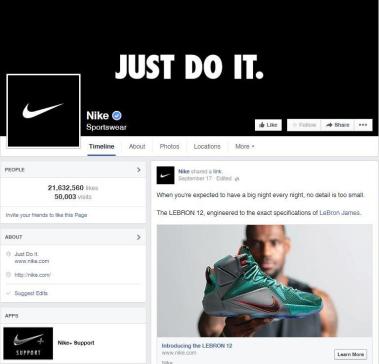
In this instance, each post by Nike is rated for your newsfeed according to three things:
1) Affinity score – how connected are you to Nike? For example, do lots of your friends like the Page as well? Do you often comment or share their updates? Have you engaged with the Page recently? The more times you said yes to the following questions the higher your affinity score and so the more updates you will see from Nike.
2) Edge Weight – how have you engaged with Nike? Not all engagements are equal and Facebook ranks comments and shares higher than it ranks likes. Those ‘higher quality engagements’ are more likely to result in Nike’s content landing in your newsfeed. In addition, Edge Weight is also about seeing what types of Nike content you engage with. For example if you always comment on their videos, but you let their image posts slide by without so much as a click then you’ll see more videos and fewer images from Nike in your newsfeed.
3) Time Decay – this one’s pretty simple, it’s just about how long ago the post was made. No one is interested in old news so as time passes Facebook’s algorithm continually marks down the value of a post until it lands in fewer and fewer news feeds. Did Nike post about something yesterday? Well you won’t be seeing that – not unless it’s Affinity Score and Edge Weight were through the roof. That’s why you pretty much never miss a proposal or new baby in your newsfeed – Facebook knows they are bigs news, so they tend to stick around.
Why does Facebook change its algorithm?
In a speech a few years ago Mark Zuckerberg told pupils graduating from the eighth grade that “there is no shortcut to success”. Look, someone even made a meme.
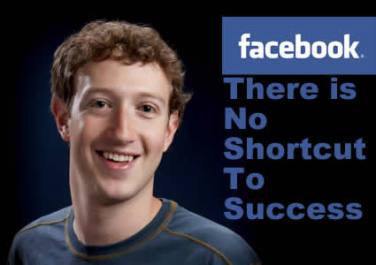
It’s a mantra he is determined that brands should live by too as he knows we can be quick to adopt easy wins when we find that a certain type of content yields best results (made very easy by Facebook’s excellent suite of analytics tools). That’s why, to maximise engagement on Facebook, brands need to stay up-to-date with the latest algorithm changes and constantly evaluate what works for them.
Below is a list of all the Facebook algorithm changes that have occurred so far in 2014. It’s important to note that each of these changes probably only accounts for a few percentage points each, so don’t follow them blindly. Every brand is different and what works for one won’t necessarily work for another. The best thing is to be aware of the changes and trends but to conduct your own evaluation of the success of your content and if you find that text updates still work for you then you should carry on doing them. However, if you notice a significant drop in engagement that appears to be the result of a Facebook algorithm change, having that knowledge will put you in the best possible position to be able to adapt your content in order to maximise engagement and reach.
January – text is no longer enough
Facebook kicked off 2014 by making text-only updates less popular for brands in their January update. This followed an analysis of users, which revealed that while seeing text updates from friends led to people posting more themselves, the same wasn’t true for brands. As a result, Facebook separated the algorithm for individuals and Pages so that while text updates work well for people, brands are encouraged to post content that contains a link, image or video. Here’s a post from Hubspot explaining more.
February – Tag a fellow brand
Twitter has long been the place where brands interact, sometimes with hilarious consequences. Check out this amazing post about how a playful interaction between Tesco Mobile and one of their customers tumbled into a wonderful open party with Jaffa Cakes, Yorkshire Tea and Cadburys among the attendees. In its February update, Facebook took a gentle step towards improved brand interaction by enabling Pages to tag each other in their posts. While this move might not have given brands the same freewheeling possibilities they get on Twitter, it does have huge engagement benefits as tagging another brand in your posts can land your content in the newsfeeds of their fans too, as well as your own. Win-win. Here’s an example of how we use this feature to promote our reader offers with consumer magazines such as Woman’s Own.
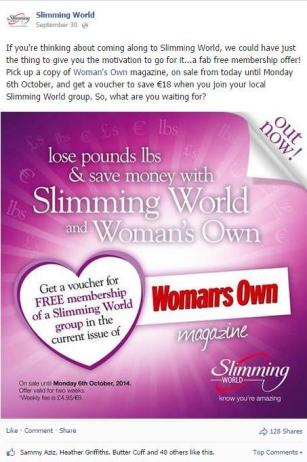
April – Don’t ask people to like your post
Once upon a time, giving people clear instructions such as ‘like if you think this’ or ‘share if you think that’ was sure to lead to far higher engagement rates than usual. Unfortunately for brands, Facebook users reported that this content (termed ‘like-baiting’) tended to be 15% less relevant than other content and so in its April update Facebook altered its algorithm accordingly. According to the company this will mostly affect Pages that frequently make specific calls for more likes or comments, rather than those that typically provide high quality content. So you don’t need to stop doing it completely.
May – post within Facebook
This May update was unlikely to have a big impact on most brands, as auto-sharing apps took a tumble in the newsfeed. The main examples given were apps like Spotify or Farmville that can be set to automatically post to Facebook. The one point worth noting is that it is likely to also impact on brands that have connected their social media accounts to post across channels all automatically (i.e. without explicitly asking it to share). It’s always advisable not to connect your social media channels for a number of reasons – content should be bespoke and you need to be present within that channel if you’re to be part of the community – but this adds another reason.
June – create better videos It’s clear that in recent months Facebook has given priority to video content – especially videos uploaded directly to the channel (great news for the ice bucket challenge). In its June update Facebook announced that it was improving its video ranking ability to give priority to videos that people watched for longer or all the way through and that they then engaged with by liking, commenting or sharing. The idea, as always, is to reward quality content and to enable poor content to slide quickly from the newsfeed.
August – provide more useful links A couple of months ago, my personal newsfeed was full of ‘click-baiting’ content as brands went to town with headlines like this: ‘This man arrived late for work, what happened next will blow your mind’. Facebook found that these links often had low quality content as users quickly clicked back to the site and didn’t engage with the content they’d seen by liking, commenting or sharing. In their August update Facebook changed the algorithm to favour links that people choose to engage with or that they spend longer reading. They made another update to links, prioritising links that are posted in the link format (i.e. that generate a preview) as opposed to links that are included in a status update where the brand has chosen to post a photo as its main media. The top is example below is how Facebook wants brands to share links. Though at Slimming World we still find pictures work best.


September – link to timely stories
Perhaps with one eye on Twitter, Facebook has revealed that its newsfeed will now feature more timely stories following its September update. Noting that discussion around TV programmes and major sports events can be widespread during that event but drop off shortly afterwards, Facebook’s algorithm will now give priority to posts that tie in with its trending topics data. It will then monitor the ongoing popularity of that discussion so that when it slows down it doesn’t remain in the newsfeed for long. Hopefully that won’t lead to lots of clumsy attempts by brands to newsjack the current agenda. If it does then I’m sure Facebook will do something about it with its next update….







